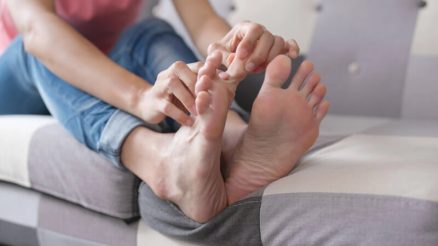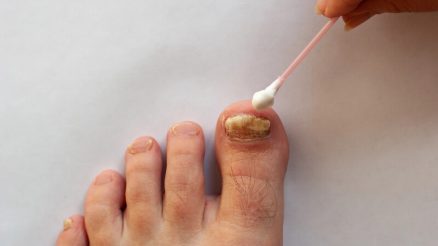Tired of rough, cracked heels and stubborn calluses? You’re not alone! Achieving baby-soft feet isn’t just about aesthetics; it’s about comfort and foot health. But with so many tools on the market, how do you choose the right one for your needs?
In this detailed guide, we’ll dive deep into the world of foot care tools, comparing the pros and cons of traditional foot files, natural pumice stones, and modern electric callus removers. By the end, you’ll be equipped to make an informed decision and step into a world of smoother, happier feet!
1. The Classic: Pumice Stones
Pumice stones are perhaps the oldest and most natural way to tackle rough skin on your feet. Formed from volcanic rock, their porous, abrasive surface is perfect for gently buffing away dead skin.
How to Use:
- Soak your feet in warm water for 5-10 minutes to soften the skin. This crucial first step helps to prepare the skin by making it more pliable and easier to exfoliate. Adding some Epsom salts or a few drops of essential oil (like lavender or peppermint) can enhance the relaxation and softening effect. Ensure the water is comfortably warm, not too hot.
- Wet the pumice stone. A wet pumice stone glides more smoothly over the skin and helps prevent unnecessary friction, which could cause irritation. You can simply hold it under running water for a few seconds.
- Gently rub the stone over callused areas in circular motions, applying light to medium pressure. Focus specifically on areas with hardened skin, like heels, balls of the feet, and toes. Avoid scrubbing too hard, as this can damage healthy skin. The goal is to gradually remove the dead skin, not to peel it off forcefully. Listen to your body and stop if you feel any discomfort or pain.
- Rinse your feet and the stone thoroughly. As you buff, dead skin cells will accumulate. Rinsing both your feet and the pumice stone frequently under running water helps to wash away these particles and keeps the stone’s abrasive surface clear for effective exfoliation.
- Apply a good foot cream or moisturizer. After exfoliating, your skin will be more receptive to moisture. A rich, hydrating foot cream, balm, or even a thick body lotion will help to lock in moisture, soothe the skin, and keep your feet soft and supple, preventing future callus buildup.
Pros:
- Natural & Eco-friendly: Made from volcanic rock, they are a sustainable choice.
- Gentle Exfoliation: Ideal for mild calluses and general skin smoothing. Less risk of over-exfoliation if used correctly.
- Affordable: Very budget-friendly and widely available.
- Portable: Small and easy to pack for travel.
- No Batteries/Electricity: Always ready to go.
Cons:
- Requires Effort: You need to put in some elbow grease and consistent effort for noticeable results.
- Less Effective on Severe Calluses: May not be powerful enough for very thick or deeply ingrained calluses.
- Can Be Messy: Can create a fine powder of dead skin during use.
- Hygienic Concerns: Requires regular cleaning and drying to prevent bacterial growth. Needs replacement over time as pores get clogged.
2. The Manual Workhorse: Foot Files (Manual Rasps/Buffers)
Foot files come in various forms, from simple sandpaper-like boards to stainless steel graters. They are designed for more targeted and often more aggressive removal of dead skin compared to pumice stones.
How to Use:
- Most foot files can be used on either wet or dry feet, though some are specifically designed for one or the other (check the product instructions). Understanding your specific file’s recommendation is key. Using a file on dry feet often provides more immediate visual feedback, allowing you to see the dead skin being removed, which can help prevent over-filing. However, some find filing wet feet more comfortable and less prone to dust. If you opt for wet use, ensure your feet are softened first, similar to using a pumice stone.
- Gently glide the file over the callused areas in one direction or back and forth, depending on the file type. For grater-style metal files, a single, firm but gentle stroke in one direction is often recommended to “peel” off layers of dead skin. For emery board or sandpaper-style files, gentle back-and-forth or circular motions can be effective. Always adapt your technique to the specific design of your file.
- Start with a coarser side for thicker calluses, then follow up with a finer side for smoothing. Many manual files are double-sided, offering a rougher grit for initial callus reduction and a smoother grit for refining the skin’s texture. Think of it like sanding wood: you start with a coarse grit to remove material quickly, then move to finer grits for a smooth finish. This two-step process ensures effective removal without leaving the skin rough.
- Stop if you feel any pain or discomfort. This is a critical safety rule. The goal is to remove dead skin, not healthy skin. If you feel any tenderness, burning, or discomfort, you’re either pressing too hard, using the wrong type of file for your skin, or have removed enough skin.
- Rinse your feet and apply moisturizer. After filing, wash your feet thoroughly to remove any loose skin particles. Then, generously apply a rich foot cream or lotion. This step is vital for hydration, soothing the skin, and maintaining the softness achieved through exfoliation, helping to prevent the rapid re-formation of calluses.
Pros:
- Effective on Moderate Calluses: Can remove tougher calluses more efficiently than pumice stones.
- Variety of Grits: Many files offer different abrasive surfaces (coarse to fine) for varying needs.
- Instant Gratification (often): Can show immediate results, especially when used on dry skin.
- No Power Required: Manual operation means no batteries or charging.
- Durable: Metal files, in particular, can last a very long time if cared for properly.
Cons:
- Risk of Over-Exfoliation: If used too aggressively, especially metal files, they can remove too much skin, leading to soreness or even injury.
- Requires Technique: Needs careful handling to avoid damaging healthy skin.
- Less Gentle: Not ideal for sensitive skin or very thin calluses.
- Hygienic Maintenance: Like pumice stones, they need thorough cleaning after each use to prevent bacterial buildup.
3. The Modern Solution: Electric Callus Removers
Electric callus removers, also known as electronic foot files, are battery-operated devices with rotating abrasive rollers. They promise a fast, effortless, and powerful solution to stubborn calluses.
How to Use:
- Ensure your feet are clean and completely dry (most electric removers are designed for dry use). Unlike pumice stones or some manual files, electric callus removers are generally most effective and safest on dry skin. Moisture can cause the roller to slip, reduce its efficacy, and in some cases, pose an electrical hazard or damage the device if it’s not waterproof. Start with thoroughly washed and dried feet to ensure optimal results and prevent the spread of bacteria.
- Turn on the device and gently glide the rotating roller over the callused areas. Allow the device to do the work. The motor provides the abrasive action, so there’s no need to apply excessive force. Simply guide the roller smoothly across the areas you want to treat, such as the heels, balls of your feet, or areas where calluses commonly form.
- Apply light pressure; the device does the work. Pressing too hard can cause the device to slow down, stop (if it has a pressure-sensitive safety feature), or irritate your skin. The key is a gentle, consistent touch. Let the spinning roller gently buff away the dead skin without forcing it.
- Avoid holding it in one spot for too long to prevent friction burns. The continuous rotation and friction can generate heat. Prolonged contact with one area can lead to discomfort, redness, or even minor friction burns. Keep the device moving constantly, sweeping it back and forth or in small circles over the callused area. It’s better to make several passes than to hold it in one place.
- Wipe off any dead skin residue and apply a foot cream. After using the electric remover, you’ll likely see a fine powder of dead skin. Wipe this away with a dry cloth or rinse your feet. Immediately follow up with a generous application of a hydrating foot cream or moisturizer. This step is crucial for rehydrating the freshly exfoliated skin, soothing any potential irritation, and locking in moisture to maintain softness and prevent new callus formation.
Pros:
- Effortless: The motor does the work, requiring minimal manual effort.
- Fast & Efficient: Can quickly remove even thick calluses.
- Less Mess: Many models have a built-in vacuum or catch system to minimize dust.
- Variable Speed Settings: Some models offer different speeds for customized exfoliation.
- Safer (with caution): Designed with pressure-sensitive shut-off mechanisms to prevent over-filing (though caution is still needed).
Cons:
- Higher Cost: Generally the most expensive option upfront.
- Battery/Charging Dependent: Requires batteries or recharging, which can be inconvenient.
- Noise: Can be quite noisy during operation.
- Less Control: While efficient, the rotating head can make it harder to target very specific small areas precisely.
- Roller Replacement: The abrasive rollers need to be replaced periodically, adding to ongoing costs.
- Can Still Cause Injury: Despite safety features, improper use (e.g., pressing too hard, using on wet skin if not designed for it) can still lead to skin irritation or damage.
Comparison Table: Which Tool is Right for You?
| Feature | Pumice Stone | Manual Foot File | Electric Callus Remover |
|---|---|---|---|
| Callus Severity | Mild | Mild to Moderate | Moderate to Severe |
| Effort Required | High | Medium | Low |
| Speed | Slow | Medium | Fast |
| Cost | Very Low | Low | High |
| Portability | High | High | Medium (bulkier, charger) |
| Mess | Moderate | Moderate | Low (some with vacuum) |
| Risk of Injury | Low (if used correctly) | Medium (if used aggressively) | Low (with proper use) |
| Maintenance | Rinse, dry, occasional replacement | Rinse, dry, occasional replacement | Clean roller, replace roller, charge |
| Best For | Daily maintenance, gentle exfoliation | Regular exfoliation, tougher spots | Quick, effortless removal of stubborn calluses |
Conclusion: Your Feet, Your Choice!
Ultimately, the best foot care tool depends on your individual needs, the severity of your calluses, and your personal preference.
- For light maintenance and a natural approach, a pumice stone is an excellent, gentle, and affordable choice.
- For moderate calluses and more targeted removal, a manual foot file offers greater efficacy without the need for power.
- For thick, stubborn calluses and a quick, effortless solution, an electric callus remover can be a game-changer, though it comes with a higher price tag and ongoing maintenance.
Many people find that a combination of these tools works best. For instance, using an electric remover for initial heavy-duty removal and then maintaining with a pumice stone or fine foot file.
No matter which tool you choose, remember these golden rules for happy feet:
- Soak (if applicable): Soften the skin for easier removal.
- Go Slowly: Don’t rush the process, and never over-exfoliate.
- Moisturize: Always follow up with a rich foot cream to keep skin soft and prevent new callus formation.
- Listen to Your Feet: Stop if you feel any pain or discomfort.
Invest in your foot health, and you’ll be walking on air in no time!








